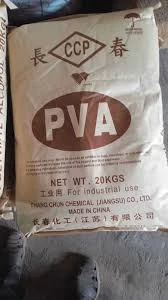Understanding Hydroxypropyl Methyl Cellulose (HPMC) and Its Applications
Hydroxypropyl Methyl Cellulose (HPMC) is a versatile, non-ionic cellulose ether that has gained significant attention across various industries due to its unique chemical and physical properties. HPMC is synthesized from natural cellulose through a series of chemical reactions that introduce hydroxypropyl and methyl groups to the cellulose backbone. This modification not only enhances its solubility in water but also provides a range of functionalities that make HPMC an essential ingredient in many formulations.
Chemical Characteristics of HPMC
HPMC is characterized by its degree of substitution, which indicates the average number of hydroxypropyl and methyl groups per anhydroglucose unit of cellulose. The ratios of these substitutions can be adjusted to achieve different solubility characteristics and viscosities. Generally, HPMC is available in various grades, determining its application suitability based on factors such as viscosity, gel formation, and thermal stability. HPMC is soluble in both hot and cold water, forming a transparent gel-like solution. This solubility is a crucial feature that drives its use in various applications, particularly in food, pharmaceutical, and construction sectors.
Applications in the Food Industry
In the food industry, HPMC is commonly used as a thickening, emulsifying, and stabilizing agent. Its ability to form gels and maintain moisture content makes it an indispensable ingredient in products such as sauces, dressings, and bakery goods. HPMC is also utilized as a fat replacer in low-calorie food formulations, adding texture and mouthfeel without the additional calories. Additionally, its safety profile and regulatory approvals (like those from the FDA) further enhance its appeal to food manufacturers committed to consumer health.
Role in Pharmaceuticals
HPMC plays a critical role in the pharmaceutical sector, particularly in tablet and capsule formulations. Its capacity to control the release of active pharmaceutical ingredients (APIs) makes it a popular choice for controlled-release formulations. HPMC can form gels in the gastrointestinal tract, allowing for the sustained release of drugs over time. This property is particularly beneficial for medications that require long-lasting effects or for patients who may have difficulty adhering to complex dosing schedules.
Moreover, HPMC serves as a binder in dry powder formulations, ensuring the uniformity and stability of tablets. Its non-toxic nature and compatibility with various active ingredients make it a preferable excipient in the pharmaceutical industry.
chemical hpmc hydroxypropyl methyl cellulose

Construction and Building Materials
In the construction industry, HPMC is used as an additive in cement, mortar, and plaster formulations. It improves the workability, water retention, and adhesion properties of these materials. HPMC can extend the open time of mortars and adhesives, allowing for better handling during application and reducing the risk of premature drying. Its use in construction materials enhances the overall durability and performance of the products, making it a valuable component for building professionals.
Cosmetics and Personal Care
HPMC’s properties extend into the cosmetic and personal care industries as well. It acts as a thickener and stabilizer in various formulations such as creams, lotions, shampoos, and gels. Its ability to retain moisture helps maintain skin hydration, making it favorable in moisturizing products. HPMC is also used in gel formulations for its clear appearance and smooth texture, which contribute to the aesthetic quality of cosmetic products.
Environmental Considerations
As a cellulose derivative, HPMC raises minimal environmental concerns, particularly when compared to synthetic polymers. Its biodegradability and compatibility with other natural materials make it an attractive choice for environmentally conscious consumers and manufacturers. The use of HPMC in biodegradable products aligns with growing trends towards sustainability and reduced environmental impact in several industries.
Conclusion
Hydroxypropyl Methyl Cellulose (HPMC) is a multifaceted compound that finds utility in various fields, including food, pharmaceuticals, construction, and cosmetics. Its unique chemical properties and functionality allow it to perform numerous roles, from thickening and stabilizing to controlled release and moisture retention. As industries continue to seek effective and sustainable ingredients, the importance of HPMC is likely to grow, establishing it as a crucial component in modern formulations. Its safety, versatility, and environmental compatibility are key factors contributing to its widespread acceptance and application.
-
Rdp Powder: Key Considerations for Wholesalers in the Building Materials IndustryNewsJul.08,2025
-
Key Considerations for Wholesalers: Navigating the World of Hpmc - Based ProductsNewsJul.08,2025
-
Hpmc Detergent: Key Considerations for WholesalersNewsJul.08,2025
-
Key Considerations for Wholesalers: China Hpmc For Tile Adhesive, Coating Additives, Concrete Additives, and MoreNewsJul.08,2025
-
Crucial Considerations for Wholesalers: Navigating the World of Construction MaterialsNewsJul.08,2025
-
Key Considerations for Wholesalers Sourcing Additive For Cement, Additive For Concrete, Additive For Putty from Additive Manufacturer Shijiazhuang Gaocheng District Yongfeng Cellulose Co., Ltd.NewsJul.08,2025




